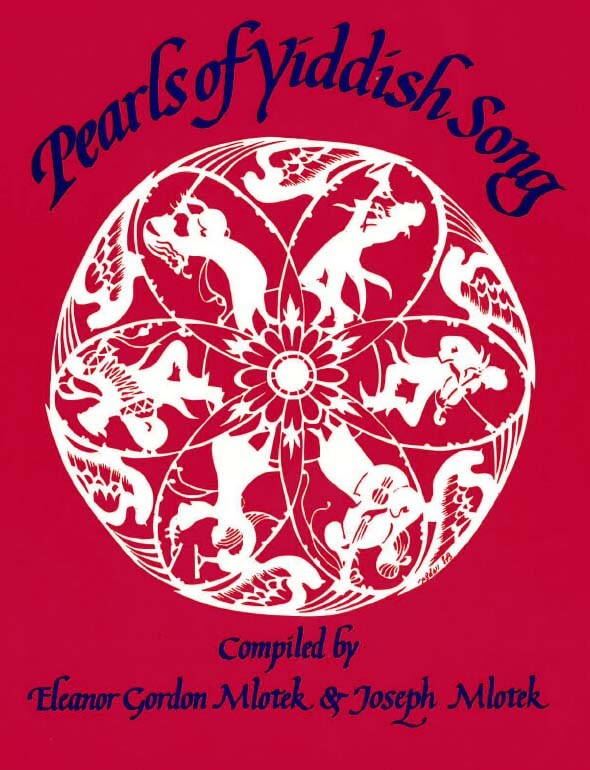Words by Itzik Fefer (1900-1952); music by S. Polonski. Published in composer’s collection in 1931.

There where grasses are more wet, a well stands lost in thought.
Young girls come with pails to draw water every night.
Under the sun, like white bears, the days grow in the orchard.
And under the distant light of the stars, youths dance in a circle.
From the steppes the breezes blow and a fire burns out.
Girls walk on the grass with pails in their hands.
The moon becomes paler and paler.
Someone drums in the night.
Dort, vu grozn zaynen naser,
Shteyt a krenetse fartrakht,
Kumen meydlekh tsien vaser
Mit di emer ale nakht.
Unter zun, vi vayse bern,
Vaksn teg in groysn sod,
Un in vayter shayn fun shtern
Tantsn yatn in a rod.
Fun di stepes vintlekh blozn
Un a fayerl derbrent;
Geyen meydlekh oyf di grozn,
Mit di emer in di hent.
Vert levone blas un blaser,
Ergets poykt men in der nakht;
Dort, vu grozn zaynen naser,
Shteyt a krenetse fartrakht.
דאָרט, װוּ גראָזן זײַנען נאַסער,
שטײט אַ קרענעצע פֿאַרטראַכט,
קומען מײדלעך ציִען װאַסער
מיט די עמער אַלע נאַכט.
אונטער זון, װי װײַסע בערן,
װאַקסן טעג אין גרױסן סאָד,
און אין װײַטער שײַן פֿון שטערן
טאַנצן יאַטן אין אַ ראָד.
פֿון די סטעפּעס װינטלעך בלאָזן
און אַ פֿײַערל דערברענט;
גײען מײדלעך אױף די גראָזן,
מיט די עמער אין די הענט.
װערט לבֿנה בלאַס און בלאַסער,
ערגעץ פּױקט מען אין דער נאַכט;
דאָרט, װוּ גראָזן זײַנען נאַסער,
שטײט אַ קרענעצע פֿאַרטראַכט.
Song Title: Di Krenetse

First published in 1988 as Pearls of Yiddish Song: Favorite Folk, Art and Theatre Songs, this anthology contains 115 songs. Some material had never been published, while others, included in rare song collections or sheet music, were largely inaccessible. The songs presented reflect Jewish life in Eastern Europe and the United States and depict childhood, love, family celebrations, poverty, work and struggle. There are also songs from the Hasidic and Maskilic movements, songs of Zion and of America, as well as songs from the Yiddish theater.
The title of this anthology derives from the weekly two-page feature column “Pearls of Yiddish Poetry,” which the compilers Yosl and Chana Mlotek initiated in 1970 in the Yiddish newspaper Der Forvertz (the Yiddish Daily Forward). Hundreds of readers from around the world — including authors, composers, singers, actors — became co-participants in this collective folk project and recalled melodies, lines, fragments, stanzas and their variants of songs, poems, and plays which they had heard in their youth. At first, readers sent in only written material. Later, they also taped songs on cassettes, many of whose melodies had, until then, never been recorded. They also identified and supplied missing information regarding lyricists, poets, and composers and described the circumstances surrounding the songs’ origins, their dissemination, diffusion and impact.